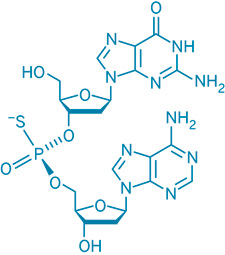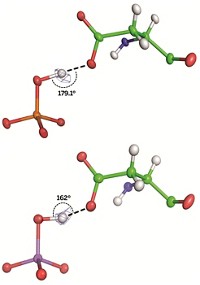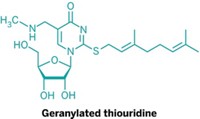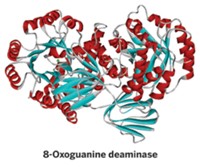Advertisement
Grab your lab coat. Let's get started
Welcome!
Welcome!
Create an account below to get 6 C&EN articles per month, receive newsletters and more - all free.
It seems this is your first time logging in online. Please enter the following information to continue.
As an ACS member you automatically get access to this site. All we need is few more details to create your reading experience.
Not you? Sign in with a different account.
Not you? Sign in with a different account.
ERROR 1
ERROR 1
ERROR 2
ERROR 2
ERROR 2
ERROR 2
ERROR 2
Password and Confirm password must match.
If you have an ACS member number, please enter it here so we can link this account to your membership. (optional)
ERROR 2
ACS values your privacy. By submitting your information, you are gaining access to C&EN and subscribing to our weekly newsletter. We use the information you provide to make your reading experience better, and we will never sell your data to third party members.
Biological Chemistry
DNA Backbone Swaps In Sulfur
Common artificial DNA modification also occurs in nature
by Carmen Drahl
October 17, 2007

A DNA modification that was originally conceived for the toolkits of biochemists and gene therapy researchers occurs naturally in bacteria (Nature Chem. Biol., DOI: 10.1038/nchembio.2007.39). The variation, in which a sulfur atom replaces one of the nonbridging oxygen atoms in a phosphate group that links DNA nucleotides together, is called phosphorothioation and is the first known physiological modification of DNA's backbone.
Microbiologist Zixin Deng and graduate student Lianrong Wang of Shanghai Jiaotong University, in China, and biological chemist Peter C. Dedon and postdoc Shi Chen of MIT unearthed the modification. The researchers confirmed the phosphorothioate's chemical structure through high-performance liquid chromatography and mass spectrometry. Though this is not the first natural appearance of sulfur in nucleic acids, the other cases occur mostly in RNA and involve modification on the heterocyclic bases as opposed to the backbone, Dedon says.
Researchers have been making DNA bearing phosphorothioates for decades. Because this functional group confers stability against nucleases, which are enzymes that cleave DNA's phosphate backbone, it has been useful for biochemical research and for clinical applications. "This result illustrates the principle that, ???If man can do it, then nature has probably already done it long before,' " notes Paul R. Schimmel, a professor of molecular biology and chemistry at Scripps Research Institute.
The newly reported work stems from over a decade of work by Deng, who previously characterized five enzymes that work together to incorporate sulfur into DNA. Many species of bacteria possess these enzymes, Dedon says, but no one has searched for them in higher organisms.
The purpose of the newfound backbone motif is not yet known. Even so, "we are very excited about the implications of this observation," Dedon says. The team suspects that phosphorothioation defends DNA against nucleases, much as methylation of DNA bases does. Phosphorothioation might also control gene expression. "It makes you wonder what other modifications of DNA are out there," comments Richard J. Roberts, chief scientific officer of New England Biolabs, which sells nucleic acids, nucleases, and other biomolecules.





Join the conversation
Contact the reporter
Submit a Letter to the Editor for publication
Engage with us on Twitter